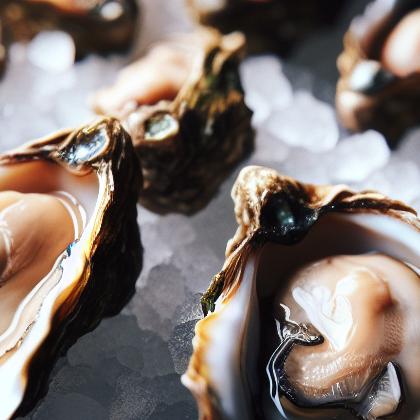Showing results for 'Oysters'
close
Oysters

The word oyster is used as a common name for a number of distinct groups of bivalve molluscs that live in marine or brackish habitats. The valves are highly calcified.Some kinds of oysters are commonly consumed, cooked or raw, by humans as a delicacy. Other kinds, such as pearl oysters, generally not eaten by humans, are harvested for the pearl produced within the mantle.
Oysters Pairs With:
Food Item
Flavor Affinity Level

Did you know there are 172 food flavor pairings in my database for Oysters available. What you are seeing above is a random list of 30 items which pair with Oysters.
For the entire list, beautifully formatted, enter your email address and click the download button below, then I'll email it to you as a PDF.
Oysters Properties:
| Food Property | Type | Description |
|---|---|---|
| Flavor Profile | Umami | Oysters have a strong umami flavor due to their high levels of glutamic acid. |
| Texture | Firmness | Oysters are firm in texture when raw, but become tender when cooked. |
| Moisture | Oysters are moist and succulent, with a briny taste due to their high water content. | |
| Nutritional Value | Macronutrients | Oysters are rich in protein and low in fat, making them a lean source of nutrients. |
| Micronutrients | Oysters are high in essential minerals such as zinc, iron, and calcium. | |
| Color | Natural Pigments | Oysters have a natural greyish-white color, with the inner flesh varying from cream to light gray. |
| Aroma | Volatile Compounds | Oysters have a distinct aroma that is often described as briny and oceanic. |
Food Pairing App - Version 1.2.0
